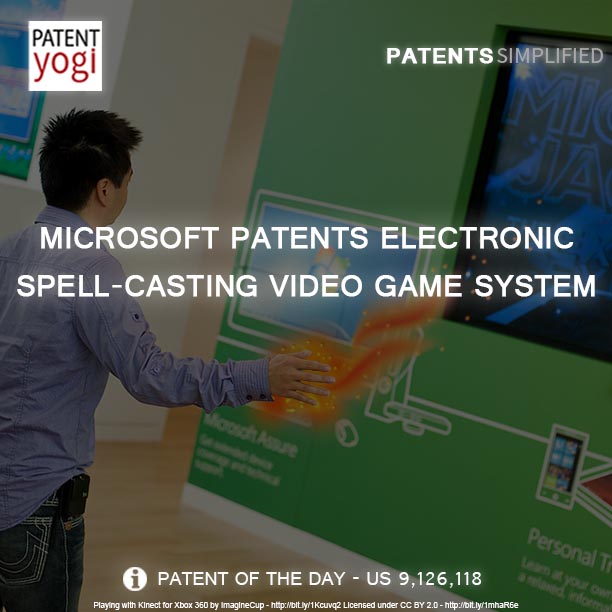 Laser tag systems, which include a gun, vest, and a central scoring computer, are known. Speech recognition (SRT) software and interfaces are known. Hand gesture computer interfaces are known. Fantasy’games, such as Dungeons and Dragons, and fantasy books, such as Harry Potter, both of which involve the casting of spells, are known.
Laser tag systems, which include a gun, vest, and a central scoring computer, are known. Speech recognition (SRT) software and interfaces are known. Hand gesture computer interfaces are known. Fantasy’games, such as Dungeons and Dragons, and fantasy books, such as Harry Potter, both of which involve the casting of spells, are known.
In fantasy games, literature, and folklore, spells are typically cast by usage of a verbal component and a physical component, the former being a magic word or phrase, and the latter being a series of hand motions, a wand, or a potion.
Role-playing games typically involve the use of dice at crucial junctures during the game, such as melee in Dungeons and Dragons. A typical dice roll situation in “d20” games such as Dungeons and Dragons involves the calculation of a threshold which the given player’s roll must exceed or meet (saving throw, etc.) and then the rolling of a 20-sided die to see whether the player succeeds at meeting the threshold. The player can use his knowledge of the game to affect that threshold, by selecting certain weapons that have a greater likelihood of hitting an opponent, for instance; but a player cannot affect the dice roll itself. His fate is ultimately left the chance.
The present invention provides an integrated gaming system, method, and device composed of five major subsystems: (I) an electronic spell-casting system, (II) a card game system, (III) a user-created card system, (IV) a system for replacing the use of random numbers in the context of a game; and (V) a board game system.
The spell-casting system provides a physical input mechanism, such as a wand equipped with motion and/or position sensors, and a verbal input mechanism, such as a microphone for use with speech recognition technology (SRT). In order to trigger a spell, a user inputs a physical input pattern and a verbal input pattern; if and only if the user input is recognized by the computer as the predetermined combination of patterns assigned to a spell, the spell is triggered, i.e., successfully cast.
Patent Information
Patent Number: US 9,126,118
Patent Title: Integrated game system, method, and device
Inventors: Harrison, Jr.; Shelton E. (Culver, CA)
Assignee: Microsoft Technology Licensing, LLC (Redmond, WA)
Family ID: 1000000930813
Appl. No.: 12/931,898
Filed: February 14, 2011
Abstract: The present invention provides an integrated game with five subsystems: (i) electronic spell-casting system, (ii) card game system, (iii) user-created card system, (iv) system for replacing the use of dice and/or random number generation; and (v) board game system. Spell-casting system provides a physical input mechanism, e.g., sensor-equipped “magic wand”, and a verbal input mechanism which together trigger a spell. Cards form formations affecting their powers and are marked as “spent” by being placed under another card. Users create their own cards through a Web-accessible site. Random number (generated by computer or dice) usage is replaced by “challenges,” i.e., player-performed tasks. Chess pieces follow standard rules but are deployed one-by-one, as are squares of the chess board. Licensing information is available through www.inventerprise.com.
Image credits: Playing with Kinect for Xbox 360 by ImagineCup – http://bit.ly/1Kcuvq2 Licensed under CC BY 2.0 – http://bit.ly/1mhaR6e

